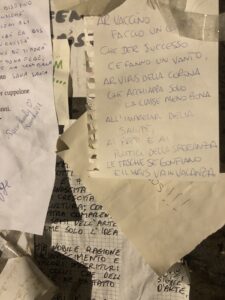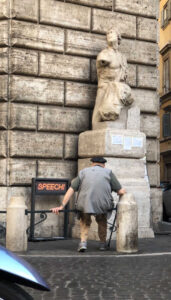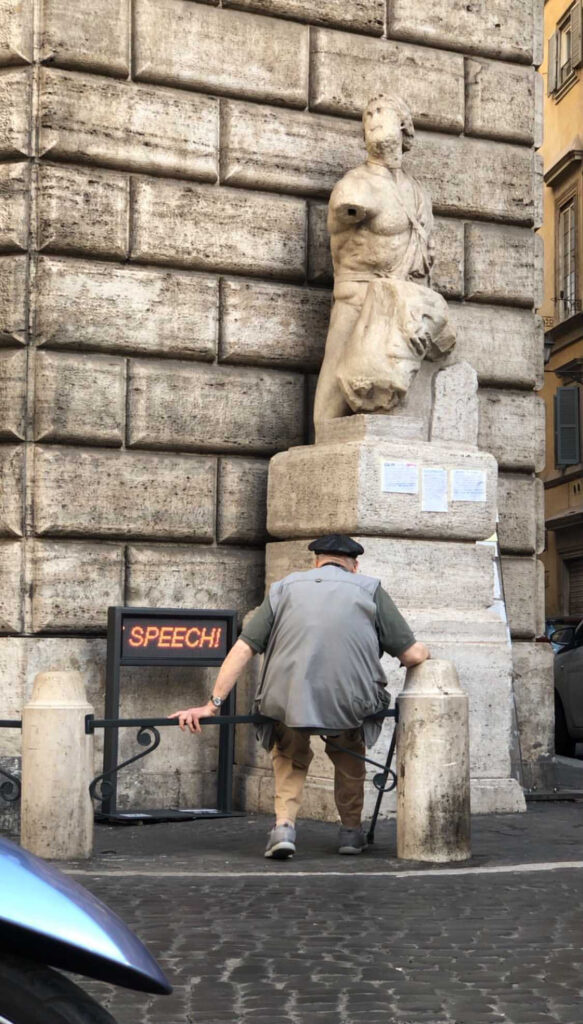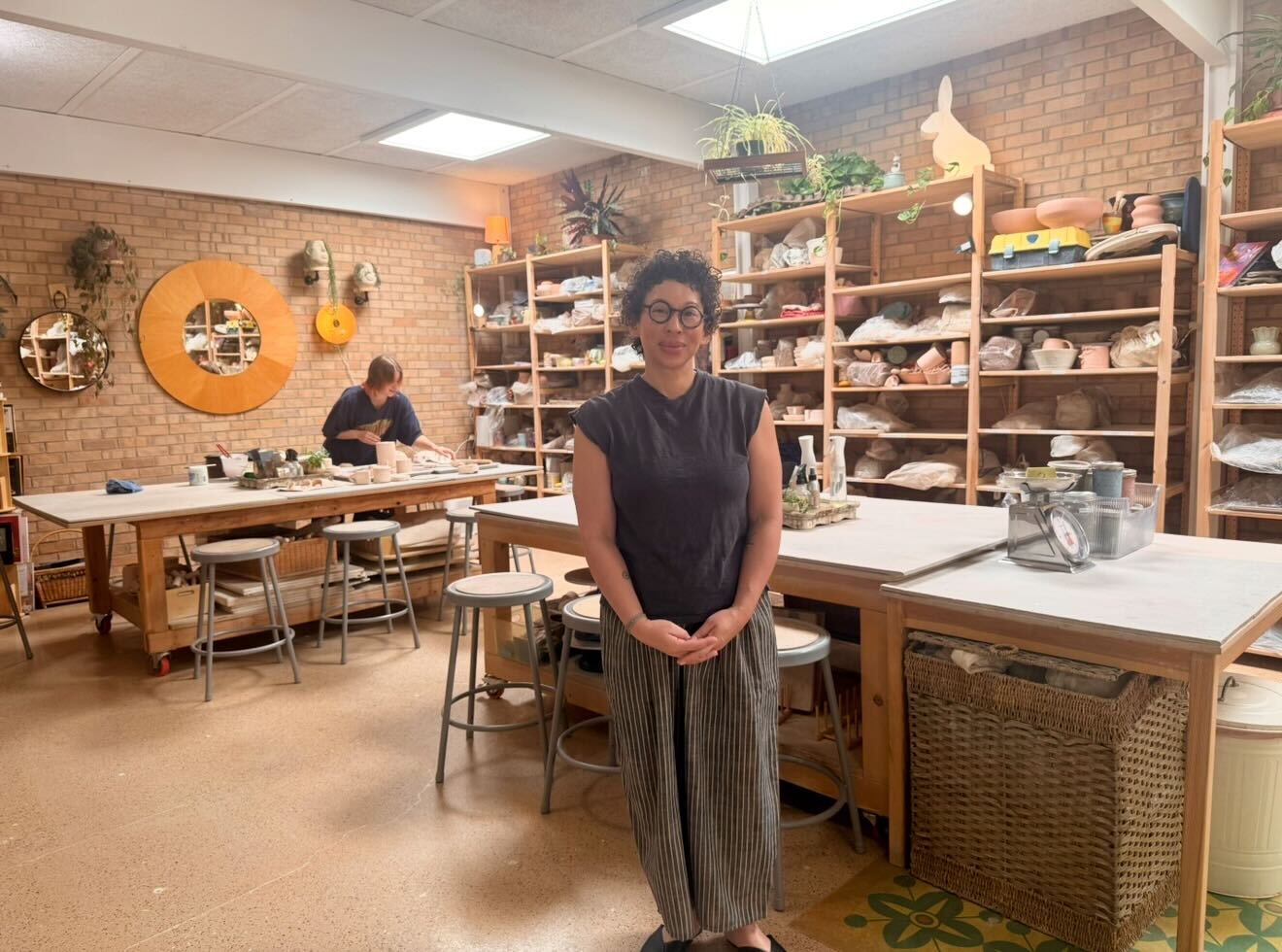ROME – Anyone, anywhere, with an internet connection, can now display a message in the center of Rome thanks to a new digital take on an old Roman tradition.

A few pasquinades on the posterboard next to Pasquino. [credit: Allie Hutchison]
Until 2017, pasquinades were placed directly on Pasquino. But that year a poster board was introduced near the statue to discourage people from touching it. On June 18, four female artists took the practice global with a project called Laic Prayers, a digital sign with a scannable QR code and a website where anyone from anywhere can input a message to be displayed.

Laic Prayers and Pasquino; seated in front is Guido Palma, a famous writer of pasquinades who attended the inauguration of the installation, but passed away shortly thereafter. [courtesy of Agnieszka Brzezina]
The four young women, students at the university, were amongst the winners of the competition.
“We were immediately drawn to Piazza di Pasquino,” said Anna Fischnaller, one of artists behind Laic Prayers. “We didn’t know much about it, but we could feel that there was something special and we knew we wanted to incorporate the statue of Pasquino.”
According to Agnieszka Brzezina, another Laic Prayer artist, they wanted a name that was “laconic and simple; Laic Prayers worked just perfectly – the voice of society.”
Though originally political in nature, the content of the messages individuals left with Pasquino has changed over time. Now, the digital messages rarely contain political content.
“In general people were very sincere with their sentences. There were a lot of love declarations, compliments from one to another, etc.,” said Brzezina.
But not everyone is pleased with the digital development.

Laic Prayer Artists from left to right: Alessandra di Mizio, Maria Chiara Prencipe, Agnieszka Brzezina, Anna Fischnaller [credit: Michele Baldi]
According to Brzezina, Laic Prayers was supposed to remain next to the statue until August, but the city council decided to keep it up for longer. How long the project will be on display remains to be seen, so make a Laic Prayer while you still can.


